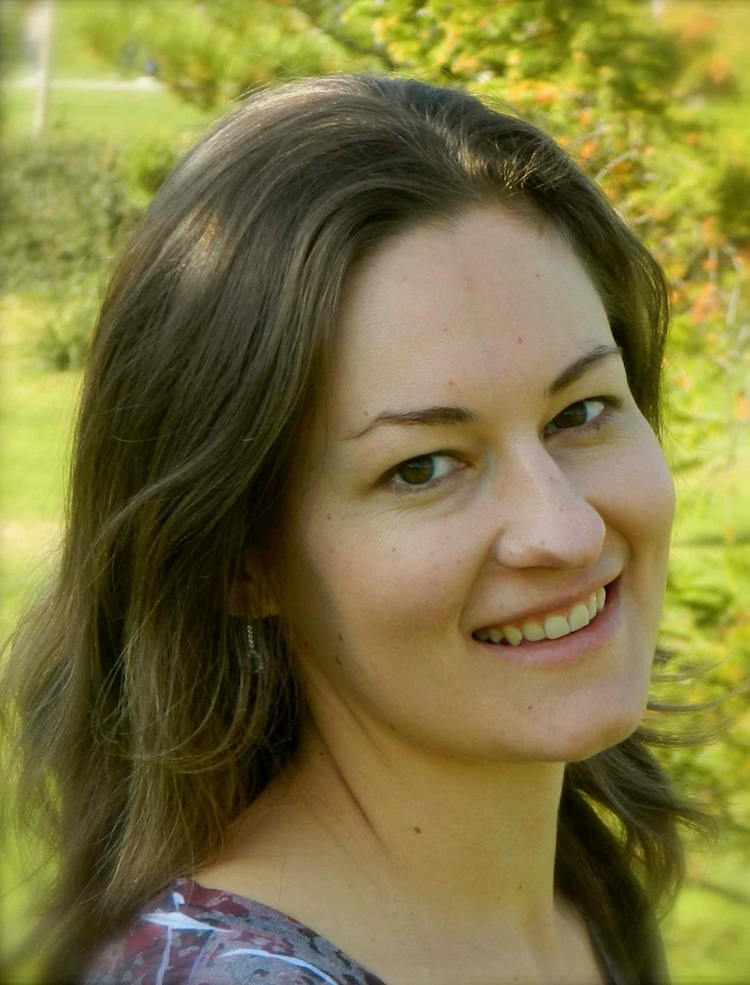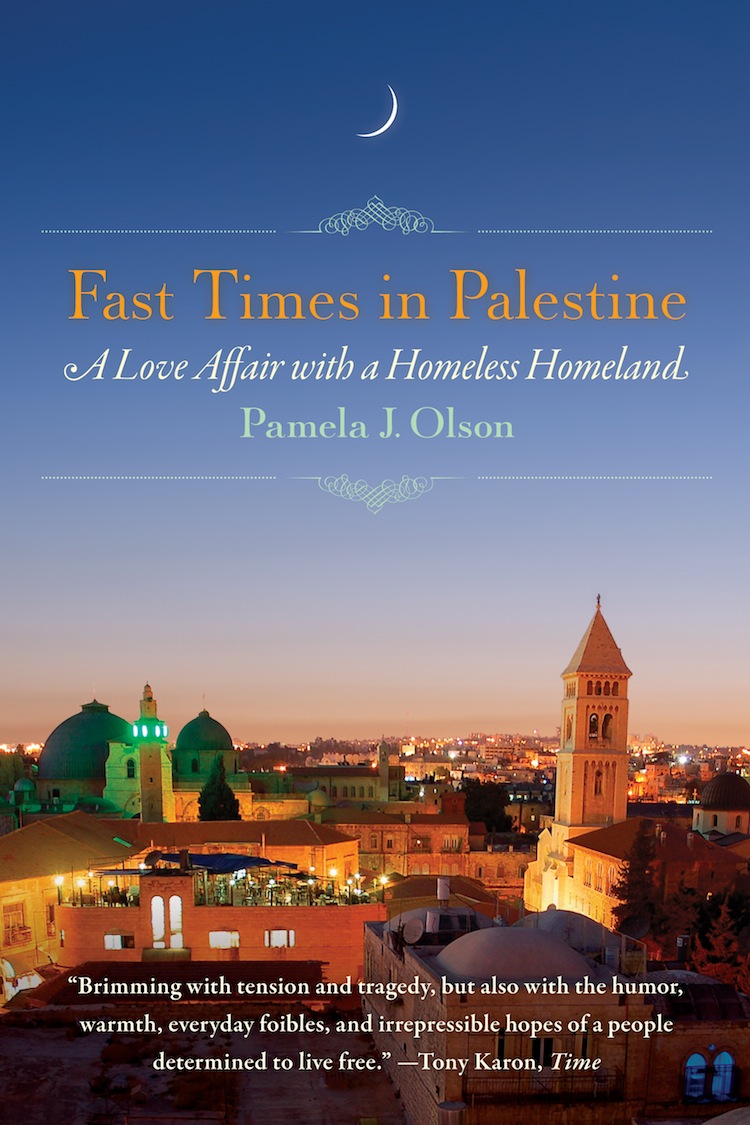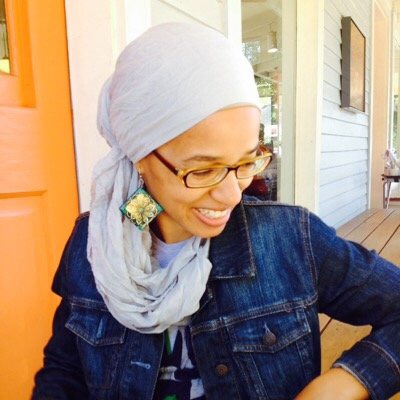Writing about Palestine is hard. To talk about it at all, one has to issue a litany of disclaimers and clarifications before broaching the subject. The discussion finally begins after the audience is already exhausted from listening to all the reasons why support for Palestine doesn’t automatically equal dislike for Israel or disrespect for Jewish history.
Pamela Olson’s story in Fast Times in Palestine: A Love Affair with a Homeless Homeland (Seal Press, March 2013) seeks an honest, human way around polite prerequisites. She does so through her own transformative journey while living, and later working, in Palestine. The beauty of Olson’s story is that it doesn’t begin with politics. She arrives in Israel at the bequest of an Israeli friend she met while backpacking in Sinai. Olson shows up as a tourist during her transitional, post-college void.
Olson, who comes from Oklahoma, was like most Americans: she knew nothing about the conflict and had no real information about Islam and Arabs (or the fact that many Palestinians are Christian). After a day harvesting olives with Palestinians near Jayyous, she witnessed the travesty of confiscated land, aggressive Israeli soldiers, and The Wall – an in-progress physical barrier between Palestine and Israel.
“Suddenly, the conflict in this part of the world was no longer a blank horror,” she writes. “It was merely an extremely difficult series of challenges whose basic units were human beings.” Her own personal story is the focus, but her story is comprised of Palestinian and Israeli threads that give human face to both perspectives.
The rest of the book breaks down the stories of these basic human units. Olson’s memoir is a testament to the complex, consistently unreported nature of Palestinian life. She introduces us to compelling characters trying to maintain normalcy, educational opportunities, and family together where every aspect of daily life is determined by the Occupation.
Olson powerfully outlines common realities for Palestinians, and even foreign aid workers, living in the Occupied Territories. There are roadblocks every few kilometers, Israeli rocket barrages, as well as confiscated lands and identities. Olson also takes time to be a young impressionable woman, and reveals a tender crush on a Palestinian man while detailing the challenges balancing infatuation across religious and cultural differences. Of course, checkpoints, roadblocks and curfews would make courtship difficult for anyone, in general.
She traveled between two worlds of Israeli and Palestinians realities, and is able to narrate the stark contrast between the two. Olson experienced the human side of daily Palestinian life. She also witnessed internal Palestinian political dynamics. She was a writer for the Palestine Monitor and worked as the foreign press coordinator for Dr. Mustafa Barghouthi’s 2005 presidential campaign. Her experience provides insider perspectives as she highlights the precarious, competitive nature of internal Palestinian politics, from backbiting among candidates to speculations about Arafat’s death. Olson makes it apparent that between politics, Israeli occupation, and the lack of international awareness, there is no easy way to be Palestinian.
Olson’s is well pedigreed: she is a Stanford graduate with a physics degree. She understands how the world works at the subatomic level, and she narrates how the world works within the competing narratives of Palestinian and Israeli identity. Olson writes about the juxtaposition between Israeli and Palestinian life as if dealing with quantum mechanics and multiple dimensions. No two worlds could be further apart, almost impenetrable at times, yet also simultaneously occurring in the same space. It is like the two are the same particle. You can split the particle and put the pieces in two different locations, but each part will still react based on who is observing the other component.
When it comes to the observer effect, one of the strongest chapters in the book, “Okies in the Promise Land,” which details her parent’s visit. They come to see their daughter without personal concern for international politics. Yet, there is a palatable shock as they realize the restrictions placed on Palestinian movement, the constant Wall presence, and how profoundly different life is a few miles away for Israeli citizens. The statistics are horrifying, such as the consistent disregard for United Nations resolutions, the number of Palestinians detained without any trial or charges, the causality rate in the Occupied Territories. Readers may wonder why Israeli citizens permit such things to happen, as it dampens and dehumanizes Jewish humanity.
To this point, she shows that there are multiple narratives of Israeli national identity just as there are Palestinian. It is hard for Israeli neighbors not too far from towns like Ramallah to appreciated how the Occupation restricts the nature of Palestinian existence. For many Israelis, their Palestinian experience arrives through suicide bombings and rockets rather than in meaningful human interaction. Palestinians know Israel via settlers or soldiers. There is pain, fear, and frustration on both sides, and Olson writes about her attempt to retain her humanity for everyone, especially challenging when one side of the story is never fully told.
At times, a reader may feel that Olson is preachy. She lays out her personal narrative and Palestinian stories along with maps, statistics, and well-researched footnotes. But, if Olson is preaching, she does so unapologetically with full awareness that because Palestinian perspectives so rarely receive attention, it is acceptable to be assertive, forthcoming and reinforced with facts and figures.
Fast Times in Palestine weaves Israeli, Palestinian, and Pamela’s American story into a moving memoir about political and spiritual awakening through a misrepresented conflict in a part of the world that most Americans do not understand. Towards the book’s end, she reminds us that our reality is created by the stories we tell ourselves. “One of the biggest threats to peace all over the world is how people get so identified with the stories in their heads,” she says, “they becoming unwilling or unable to deal with reality as it actually occurs.”
—
 Pamela Olson lived in Ramallah for two years and and worked as head writer and editor for the Palestine Monitor, among other things..Her work has appeared in various magazines, including CounterPunch and Israel’s Occupation Magazine. Fast Times in Palestine is her first book. Visit here to learn more about her experiences and work.
Pamela Olson lived in Ramallah for two years and and worked as head writer and editor for the Palestine Monitor, among other things..Her work has appeared in various magazines, including CounterPunch and Israel’s Occupation Magazine. Fast Times in Palestine is her first book. Visit here to learn more about her experiences and work.












